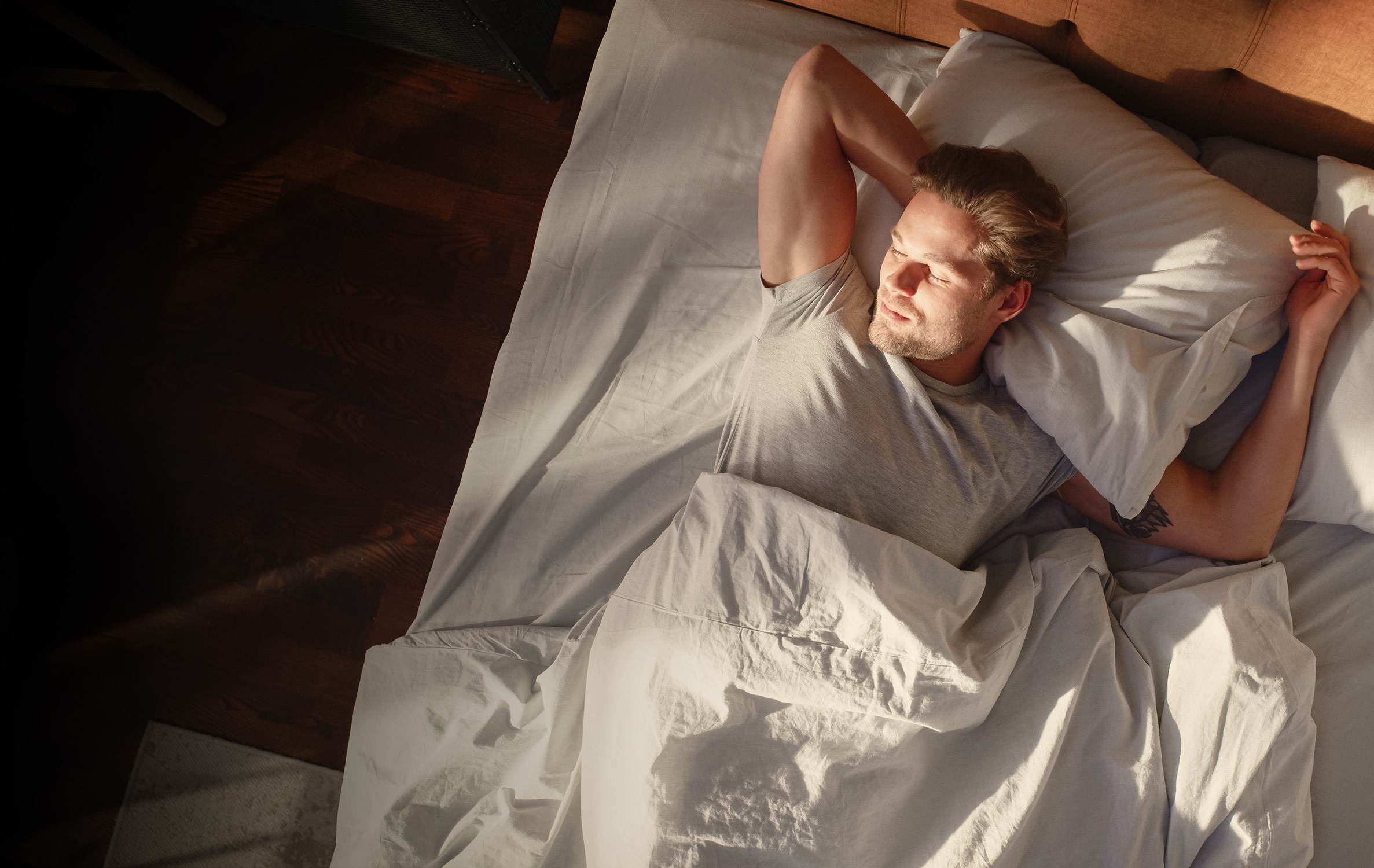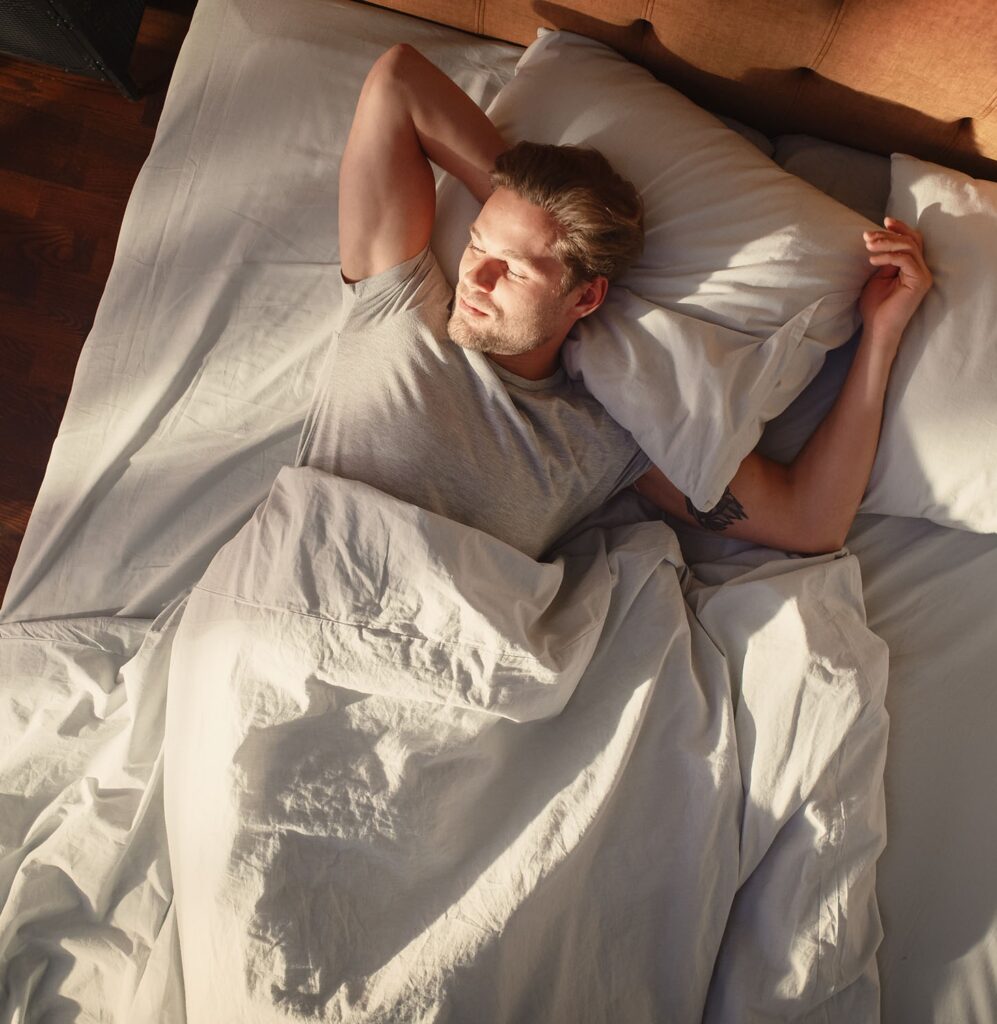The Science & Benefits of Sleep Aetas Protocols
To every human worldwide, sleep is something that we all do at some point during our 24-hour day, with the average person sleeping for one third of this. It is integral part of living a healthy life and also a complex biological process that involves both body and brain.

What do we know about Sleep?
Scientists have studied sleep for decades and have made significant progress in understanding the science behind it. Something we’ll dig into throughout this article.
Overall, we know that sleep needs vary among individuals, with the average adult requiring around 7-9 hours of sleep per night. Some people may function well with less than that (short sleepers), while others may require more (long sleepers).
The Benefits of Sleep
We all know that getting a good night’s sleep can ensure that we have more energy for the day ahead and will feel less tired overall, but scientifically there are many more benefits to sleeping well – including not being a bit grumpy.
Memory consolidation: Sleep plays a crucial role in consolidating and organising memories. During sleep, the brain processes and strengthens newly acquired information, helping us enhance learning and memory retention1Carskadon, M. A. (2011c). Sleep’s effects on cognition and learning in adolescence. In Progress in Brain Research (pp. 137–143). Elsevier BV..
Cognitive function: A good night’s sleep has a positive impact on various cognitive functions, including attention, concentration, problem-solving, creativity, and decision-making. Sufficient sleep allows the brain to function optimally and improves cognitive performance.
Physical restoration: Sleep is a time for physical restoration and rejuvenation. It is during sleep that the body repairs tissues, boosts immune function, synthesises hormones, and replenishes energy levels. Sufficient sleep supports optimal physical health and strengthens the immune system.
Metabolic health and weight regulation: Adequate sleep plays a role in maintaining a healthy metabolism and weight. Sleep deprivation has been linked to imbalances in appetite-regulating hormones, increased hunger, cravings for unhealthy foods, and a higher risk of obesity2Boyko, E. J., Seelig, A. D., Jacobson, I. G., Hooper, T. I., Smith, B., Smith, T. C., Crum-Cianflone, N. F., & Millennium Cohort Study Team (2013). Sleep characteristics, mental health, and diabetes risk: a prospective study of U.S. military service members in the Millennium Cohort Study. Diabetes care, 36(10), 3154–3161..
Cardiovascular health: Sustaining healthy sleep patterns is associated with a lower risk of cardiovascular diseases, including high blood pressure, heart disease, and stroke. Sufficient sleep promotes a healthy heart and supports the proper functioning of the cardiovascular system.
Mental health and well-being: Sleep and mental health are closely intertwined. Sufficient sleep is crucial for emotional well-being, mood regulation, and the prevention of mental health disorders such as depression and anxiety. Conversely, sleep disturbances can contribute to the development or exacerbation of mental health issues3Kim, J., & Shin, J. (2017). 0244 A GOOD NIGHT SLEEP ENHANCES LIFE SATISFACTION: THE ROLE OF THE POSITIVITY OF RECALLED EXPERIENCES. Sleep, 40(suppl_1), A90–A90..
Overall performance and productivity: Quality sleep is essential for optimal performance and productivity in various areas of life, including work, academics, and sports. Good sleep habits lead to increased focus, attention, alertness, and overall efficiency in daily activities.

“We are a chronically sleep deprived society. Studies have shown us that one in three people don’t get enough sleep. We often consider good sleep as the third pillar of good health, alongside diet and exercise. However, in reality, sleep is actually the foundation for diet and exercise.”
Matthew Walker
Professor in Neuroscience and Psychology at the University of California, Berkeley
What happens when we don’t get enough sleep?
Sleep is controlled by the circadian rhythm which is a 24-hour cycle that regulates the timing of sleep and wakefulness. It is controlled by a group of cells in the brain called the suprachiasmatic nucleus (SCN), which is sensitive to light and dark.
The sleep cycle of the human body consists of two main phases: rapid eye movement (REM) sleep and non-rapid eye movement (NREM) sleep. NREM sleep can be further classified into three stages known as N1, N2, and N3. These stages involve distinct variations in muscle tone, brain wave patterns, and eye movements. Throughout the night, the body typically undergoes 4 to 6 complete sleep cycles, with each cycle lasting approximately 90 minutes on average4Memar, P., & Faradji, F. (2018). A Novel Multi-Class EEG-Based Sleep Stage Classification System. IEEE Transactions on Neural Systems and Rehabilitation Engineering, 26(1), 84–95..
Approximately 75% of sleep is spent in the NREM stages, with the majority spent in the N2 stage5Malik, J., Lo, Y., & Wu, H. (2018). Sleep-wake classification via quantifying heart rate variability by convolutional neural network. Physiological Measurement, 39(8), 085004.. A typical night’s sleep consists of 4 to 5 sleep cycles with the first REM period being short, and, as the night progresses, longer periods of REM and decreased time in deep sleep (NREM) occur.
The sleep-wake cycle is regulated by neurotransmitters which are chemicals in the brain that regulate sleep and wakefulness. Two key neurotransmitters are serotonin and norepinephrine, which are involved in promoting wakefulness. Another important neurotransmitter is adenosine, which promotes sleep.
As we spend a third of our lives sleeping, understanding sleep physiology and disorders is integral within the clinical world. Lack of sleep can negatively affect memory, cognitive function, and overall health, increasing the risk of conditions like obesity, diabetes, and cardiovascular disease6Labarca, G., Reyes, T., Jorquera, J., Dreyse, J., & Drake, L. E. (2018). CPAP in patients with obstructive sleep apnea and type 2 diabetes mellitus: Systematic review and meta-analysis. Clinical Respiratory Journal, 12(8), 2361–2368..
Sleep problems have adverse effects on well-being, daily functioning, and quality of life with links to heart disease, weight gain, inflammation, and depression, as well as triggering or worsening anxiety. Insomnia, which is characterised by difficulty falling or staying asleep despite having enough opportunity, is a common condition that significantly impairs daily life. If you suffer from bad sleep, Aetas can help you figure out what the cause could be and distill an easy to follow routine to help you in getting a peaceful night of rest.
Types of Sleep Disorders
Sleep Apnea is when the airway collapses during deep sleep stages and leads to reduced N3 and REM sleep, causing excessive daytime drowsiness7Liu, S., Huang, Y., Tai, H., Zhang, K., Wang, Z., Shen, D., Fu, H., Su, N., Shi, J., Ding, Q., Liu, M., Guan, Y., Gao, J., & Cui, L. (2018). Excessive daytime sleepiness in Chinese patients with sporadic amyotrophic lateral sclerosis and its association with cognitive and behavioural impairments. Journal of Neurology, Neurosurgery, and Psychiatry, 89(10), 1038–1043.. There are two types: central and obstructive. Central sleep apnea is when the brain fails to signal respiratory muscles, while obstructive sleep apnea is due to a blockage in the upper airway.
REM Disorder is the disruption of muscle paralysis during REM sleep results in physical actions, vocal outbursts, and limb movements. It is linked to conditions like Parkinson’s disease or Lewy body dementia8Handley, S. (2017). Deformities of Nature: Sleepwalking and Non-Conscious States of Mind in Late Eighteenth-Century Britain. Journal of the History of Ideas, 78(3), 401–425..
Narcolepsy is characterized by daytime sleepiness and cataplexy9Colten, H. R., & Altevogt, B. (2006). Sleep Disorders and Sleep Deprivation: An Unmet Public Health Problem [Dataset]. In PsycEXTRA Dataset.. Sleep regulation is disrupted, leading to direct entry into REM sleep and limited time in N3. Rapid transition into REM phase during short naps is common and muscle weakness episodes may occur.
Sleepwalking (Somnambulism) is common in children, involving purposeful movements during sleep10Handley, S. (2017). Deformities of Nature: Sleepwalking and Non-Conscious States of Mind in Late Eighteenth-Century Britain. Journal of the History of Ideas, 78(3), 401–425.. It occurs during non-REM stages, particularly N3 and it is associated with routine activities.
Restless Legs Syndrome (RLS) is a neurological disorder11Memon, M. D., Faiz, S., Zaveri, M. P., Perry, J. C., Schuetz, T. M., & Cancarevic, I. (2020). Unraveling the Mysteries of Restless Leg Syndrome. Cureus, 12(10), e10951. that causes restless and uncomfortable sensations in the legs, leading to an uncontrollable urge to move them.
How to improve your Sleep
In the United States, it is estimated that up to 70 million people suffer from chronic sleep disorders, while in Europe, the number reaches approximately 45 million12Harding, K. G., & Feldman, M. (2008). Sleep Disorders and Sleep Deprivation: An Unmet Public Health Problem. Journal of the American Academy of Child and Adolescent Psychiatry, 47(4), 473–474.. The consequences of inadequate sleep are far-reaching, as evidenced by studies showing that approximately 20% of severe car accident injuries are linked to driver sleepiness, irrespective of alcohol consumption. Various factors contribute to sleep problems, including lifestyle choices, environmental conditions, psychosocial factors, and underlying medical conditions.
Practising and aiming for good sleep health is a vital step in longevity. Here are our top tips on how to get started13Walker, M. (2017). Why We Sleep: Unlocking the Power of Sleep and Dreams. Simon and Schuster.:
Aim to get 7 - 9 hours of sleep per day
No less, no more – and try to stay consistent.
Adjust to your circadian rhythm
Try to adjust to your circadian rhythm by making sure you see at least 10 minutes of morning sunlight and evening sunset.
Stick to a consistent sleep schedule
Stick to a consistent sleep schedule by going to bed and wake up at the same time every day, even on weekends. This regularity helps regulate your body’s internal clock and promotes better sleep quality.
Create a sleep-friendly environment
Create a sleep-friendly environment by eliminating sounds and light by using earplugs and blackout blinds/sleep mask.
Adjust the temperature in your room
Adjust the temperature in your room to 18°- 19° as an optimal sleeping temperature.
Minimise exposure to bright lights
Minimise exposure to bright lights, especially from electronic devices like smartphones, tablets, and computers at least up to 1 hour before bed. The blue light emitted by these devices can interfere with the natural sleep-wake cycle.
Don’t eat, exercise or drink alcohol 3 hours before bed
Have your last cup of coffee no later than 6 hours before bed.
Make sure the bed is used for only sleep and sex
Try not to drink a couple of hours before bed
Try not to drink a couple of hours before bed so that you limit the need to go to the bathroom during the night.
Use a sauna and/or meditation
If possible, use a sauna and/or meditation to destress before bed.

KEY TAKEAWAY
Sleep is not just a daily routine. It’s a fascinating and crucial process that impacts our entire well-being. When we get the right amount of sleep, around 7-9 hours per night, the benefits are extraordinary. It’s during sleep that our memories solidify, our cognitive functions sharpen, our bodies restore and rejuvenate, and our metabolism stays in check. Adequate sleep even contributes to a healthy heart, improved mental health, and enhanced overall performance in our daily lives.
Make your move
Optimise your health so that you live a longer and healthier life
Aetas is a clinic for precision medicine and molecular laboratory. We specialise in Longevity, evidence-based health optimization and preventive treatments.
Enquire Now







